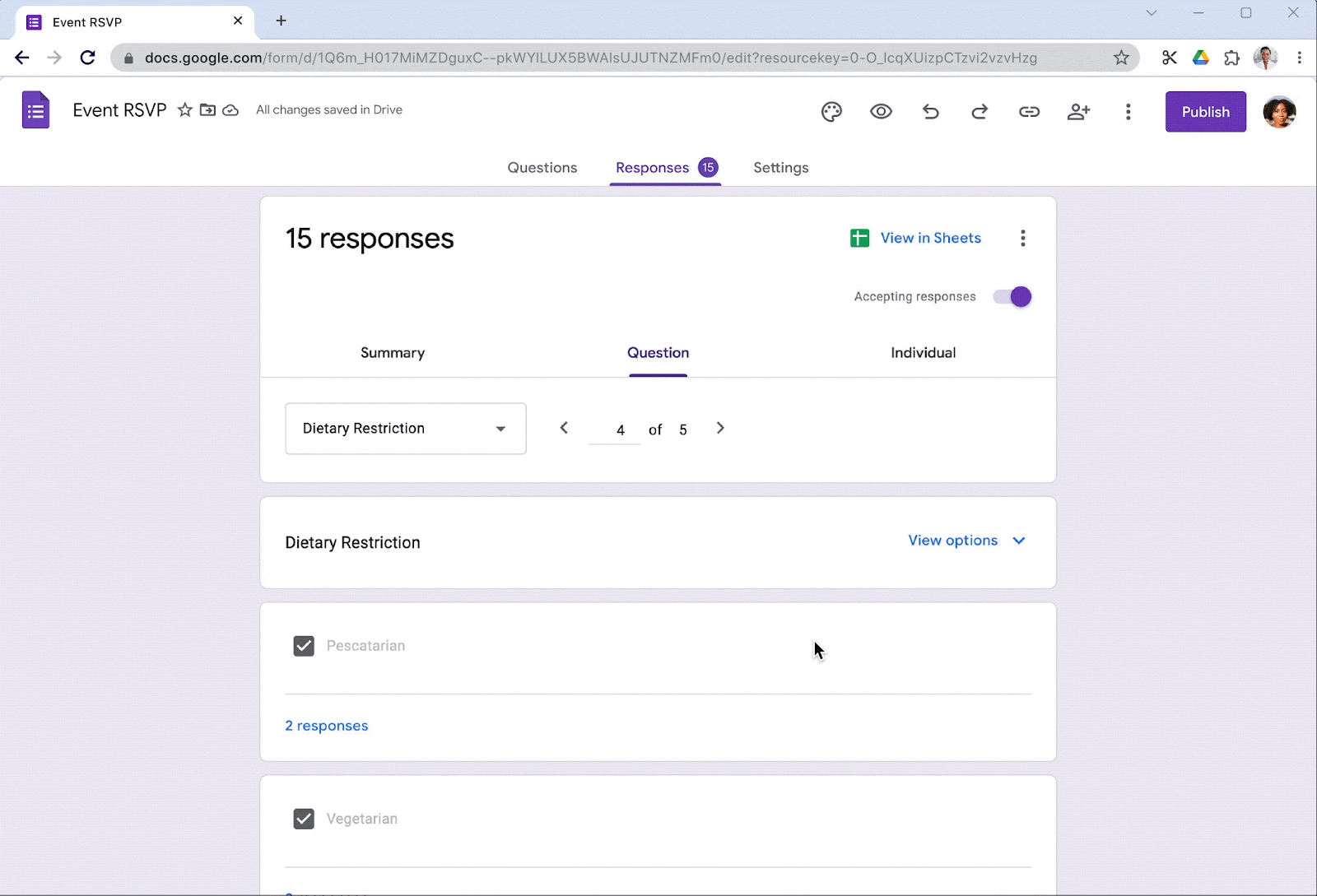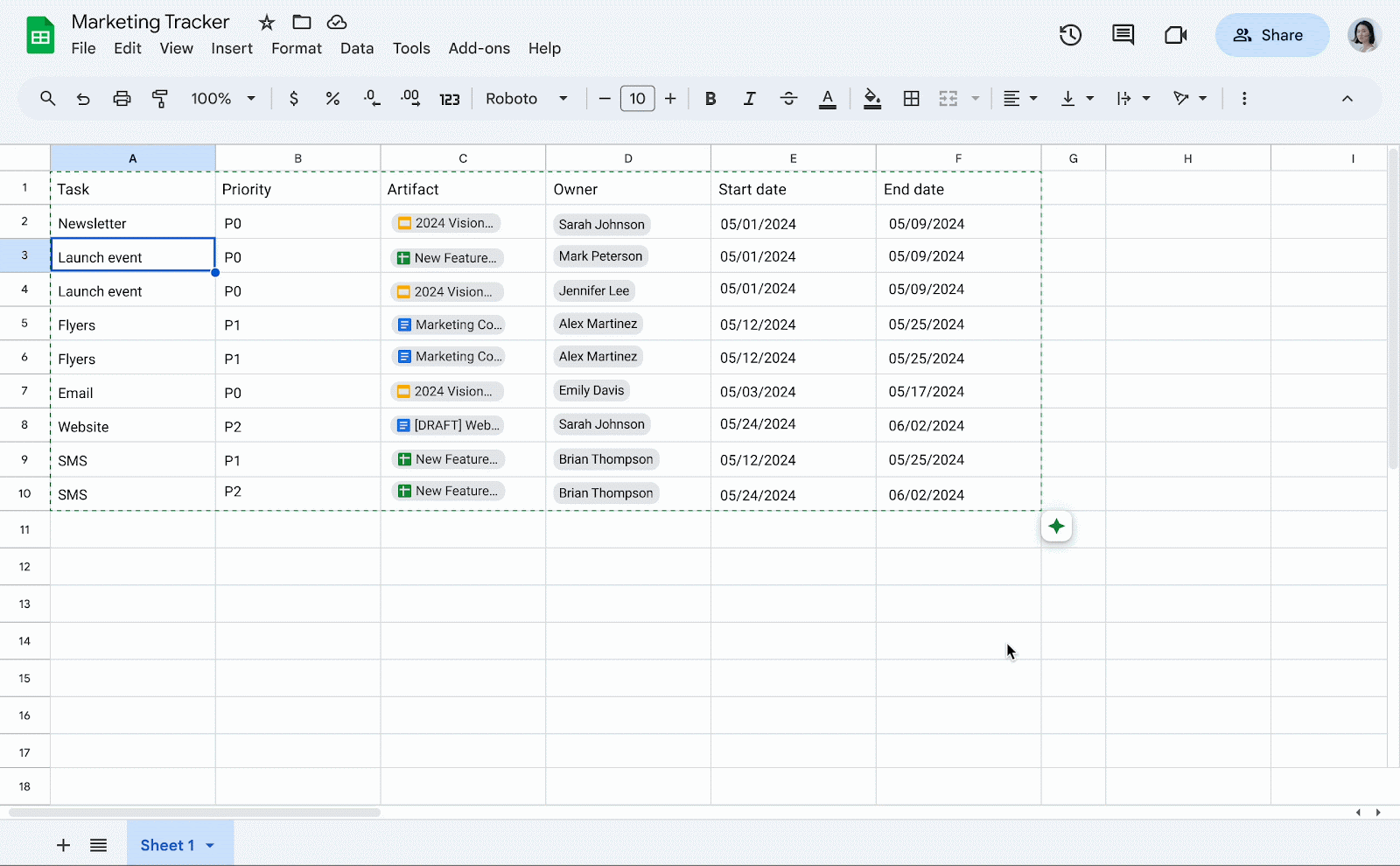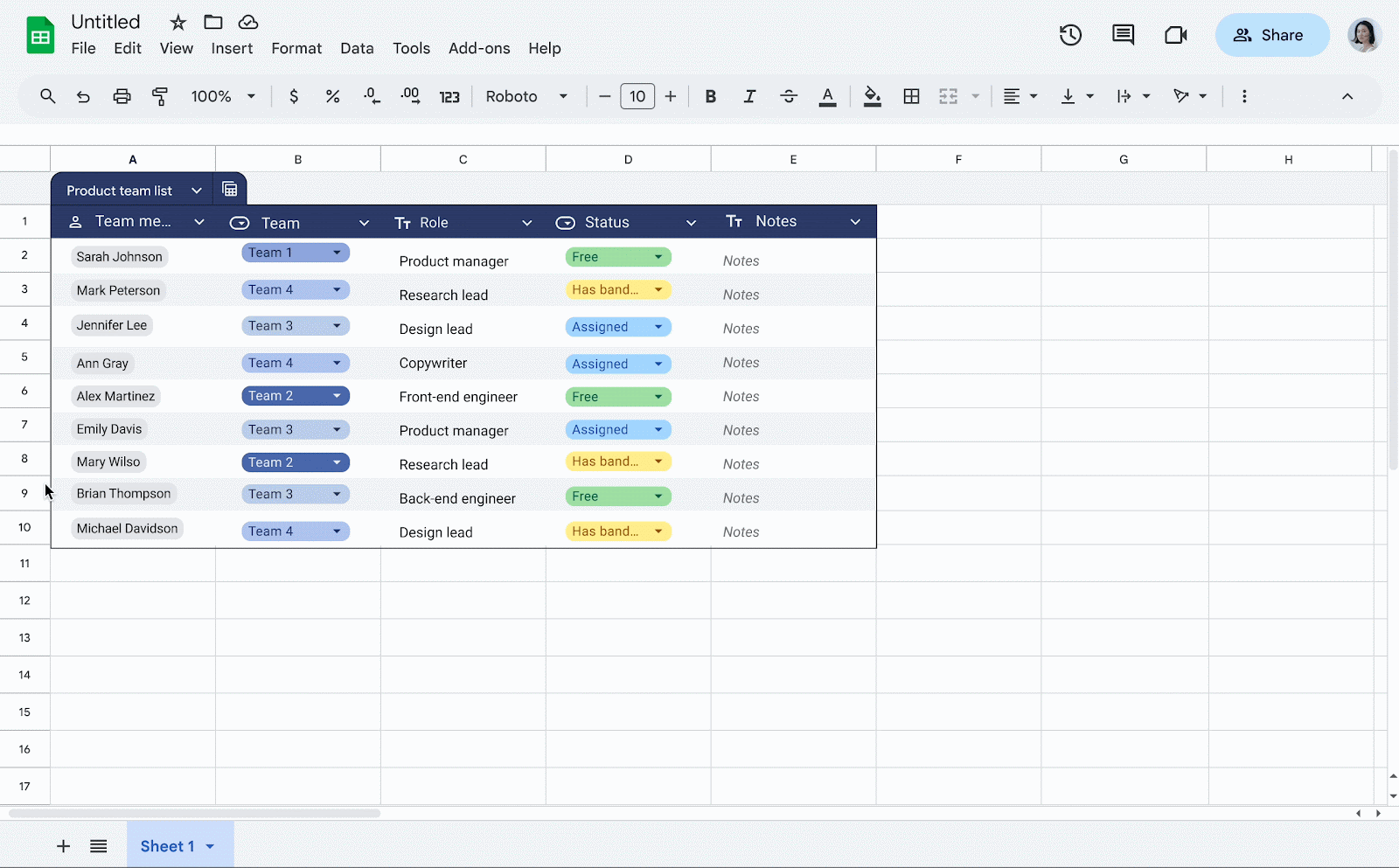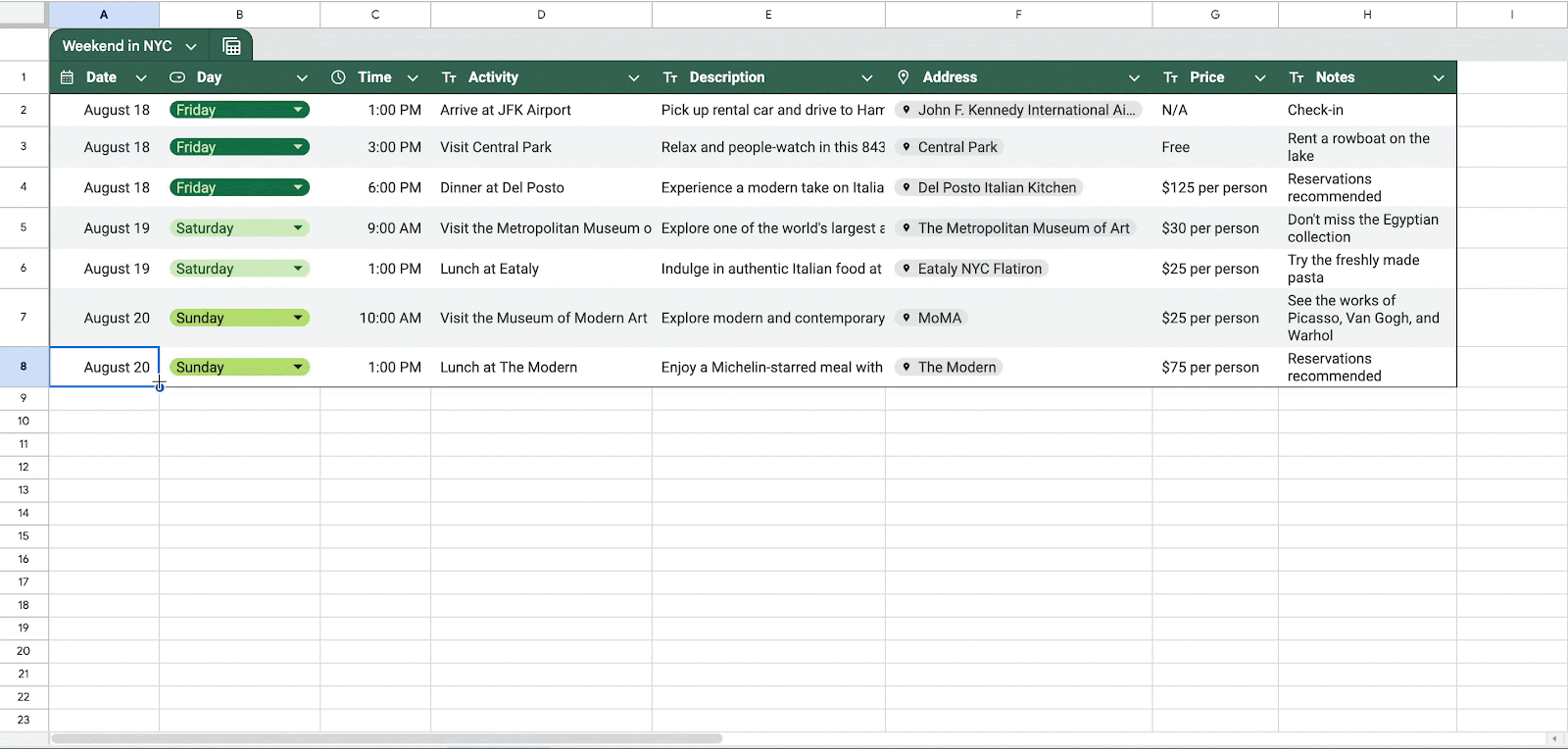3 New updates
Unless otherwise indicated, the features below are available to all Google Workspace customers, and are fully launched or in the process of rolling out. Rollouts should take no more than 15 business days to complete if launching to both Rapid and Scheduled Release at the same time. If not, each stage of rollout should take no more than 15 business days to complete.
Ability to create announcement spaces using the Google Chat API is now generally available
In June, we introduced the option to create announcement spaces using the Google Chat API through the Google Workspace Developer Preview Program. We’re excited to announce Google Workspace developers can now use the Chat API to create announcement spaces, plus read and update the permission settings of a space. | Rolling out now to Rapid Release domains and Scheduled Release domains. | Available to all Google Workspace customers. | Visit these Developer Docs for more information: PredefinedPermissionSettings and PermissionSettings fields.
Additional improvements to tables in Google Sheets
Following our announcement of improvements to tables in Google Sheets, we’re adding even more enhancements to the experience. More specifically, you can now:
1. Insert a blank table from the pre-built table sidebar
2. Reference tables successfully via IMPORTRANGE. For example, if you had a table named Table1 with column header values of of Column 1, Column 2, Column 3, etc.:
- To import the table range, including header cells, you would input: =IMPORTRANGE(spreadsheet_url, “Table1[#ALL]”)
- To import only the footers of the table range, you would input: =IMPORTRANGE(spreadsheet_url, “Table1[“#TOTALS]”)
- To import the table range, excluding header cells, you would input: =IMPORTRANGE(spreadsheet_url, “Table1[“#DATA]”)
- To import the first two columns of the table range, including header cells, you would input: =IMPORTRANGE(spreadsheet_url, “Table1[[Column 1]:[Column 2],[#ALL]]”)
- Cmd+Opt+T for Mac
- Ctrl+Alt+T for Linux and Windows
Introducing Dual Screen on Meet
Following the recent announcement of an improved user experience for Google Meet on Android devices, we’re excited to introduce an additional feature, available on the Pixel 9 Pro Fold device, that provides you with a more immersive video call experience. Through the use of the front and inner cameras, you can now show both yourself and what you're looking at at the same time. Additionally, the person you're video chatting with can be seen on both the inner and outer screens to include everyone around you in the call. | Rollout to Rapid Release domains is complete; rolling out now to Scheduled Release domains. | Available to all Google Workspace customers, Workspace Individual Subscribers, and users with personal Google accounts. | Visit the Help Center to learn how Dual Screen on Google Meet works.
Use both screens during a Meet call - rear screen view of foldable
Use both screens during a Meet call - front screen view of foldable
Previous announcements
The announcements below were published on the Workspace Updates blog earlier this week. Please refer to the original blog posts for complete details.
Adding multi-monitor support to Google Slides
We’re making it easier to view your Google Slides presentation controls on your computer while presenting to an audience using a connected external monitor or projector. | Learn more about multi-monitor support in Slides.
New beta available that restricts access to folders in Google Drive
We’ve introduced a beta that allows shared drive managers to restrict folders to specific users within a shared drive. This provides shared drive managers with greater flexibility to keep relevant content within a single shared drive, while restricting access to shared folders with sensitive information. | Learn more about restricting folder access.
New design and accessibility improvements for embedded Google Calendars
Starting this week, you’ll notice a refreshed look and feel for embedded calendars that is in line with Google Material Design 3 and now includes enhanced accessibility features, such as the ability to use an embedded calendar with a screen reader and keyboard shortcuts to navigate more easily, and more. | Learn more about embedded Google Calendars.
NotebookLM now available as an Additional Service
Last year, we introduced an Early Access App called NotebookLM, an experimental product using some of Google's most advanced models, like Gemini 1.5 Pro, that helps you gain critical insights grounded in the content of source documents you trust. We’re excited to announce that NotebookLM is officially available as an Additional Service. | Learn more about NotebookLM.
Admin features for space management via the Chat API are now generally available
Earlier this year, we introduced a series of space management capabilities for Workspace admins in the Google Chat API via the Google Workspace Developer Preview Program. These API features are now generally available for all Google Workspace customers and developers. | Learn more about space management via the Chat API.
Create birthdays in Google Calendar
To ensure a birthday is never missed, we’re introducing the ability to create and modify birthday events in Google Calendar on Android devices. | Learn more about birthdays in Calendar.
Additional iOS data exfiltration enhancement: account level data sharing between Google Workspace apps and non-Google Workspace apps on or off
Admins can now enable content sharing on personal Workspace accounts while preventing data sharing from corporate Workspace accounts on iOS devices. | Learn more about iOS data exfiltration enhancements.
Completed rollouts
The features below completed their rollouts to Rapid Release domains, Scheduled Release domains, or both. Please refer to the original blog posts for additional details.
Rapid Release Domains:
Rapid and Scheduled Release Domains:
- Providing student engagement signals for Google Drive file attachments in Google Classroom
- Co-annotate from select Google Meet hardware devices
- The TeamViewer Meet Add-on is now available
- NotebookLM now available as an Additional Service
- Admin features for space management via the Chat API are now generally available












